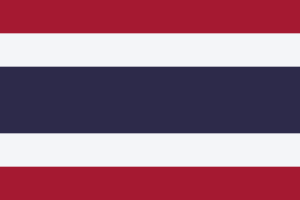by Peter Melzer
 ECONOMY. Thailand has a pro-business market economy driven by strong foreign investments and export oriented manufacturing especially in electronics, foods and automobiles. Thailand’s exports account for 60% of the country’s GDP. Thailand experienced strong economic growth prior to the Asian economic crisis of 1997 with GDP growth averaging 9.4% annually. However, the crisis adversely affected businesses in Thailand and saw the value of the Thai Baht decline by more than 50% against the US dollar. Since the crisis, the economy has grown on a growth path.
ECONOMY. Thailand has a pro-business market economy driven by strong foreign investments and export oriented manufacturing especially in electronics, foods and automobiles. Thailand’s exports account for 60% of the country’s GDP. Thailand experienced strong economic growth prior to the Asian economic crisis of 1997 with GDP growth averaging 9.4% annually. However, the crisis adversely affected businesses in Thailand and saw the value of the Thai Baht decline by more than 50% against the US dollar. Since the crisis, the economy has grown on a growth path.DEMOGRAPHY. Ethnic Thais account for 75% of Thailand’s 65 million population and another 11% are Chinese or Sino-Thais who have assimilated into the Thai culture or are from mixed marriages. Minorities include Malays who lived mainly in southern Thailand and account for 4% of the population.
Others include the Mon, Lao, Khmers, Puan and Karen minorities and immigrants from India. Nearly 95% of the country’s population are Buddhists while Malays in Thailand are predominantly Muslims. Thai is the national language while languages used by the minorities include Malay, Isan and Khmer. Schools teach English but proficiency is low and generally, the educated elite are more proficient with the language.
 Nearly 60% of Thailand’s workforce is involved in the agriculture industry but contributed to only 9.8% of the country’s GDP in 2004. The services industry contributed towards 46.1% of Thailand’s GDP and manufacturing 44.1% during the period. Major industries include tourism, electronics, textiles and garments, processed foods, beverages, agriculture produce, jewellery, furniture, plastics, vehicles and vehicle parts and mining of tungsten and tin. Major agriculture products include rice, tapioca, rubber, corn, sugarcane, coconuts, soybean and milk.
Nearly 60% of Thailand’s workforce is involved in the agriculture industry but contributed to only 9.8% of the country’s GDP in 2004. The services industry contributed towards 46.1% of Thailand’s GDP and manufacturing 44.1% during the period. Major industries include tourism, electronics, textiles and garments, processed foods, beverages, agriculture produce, jewellery, furniture, plastics, vehicles and vehicle parts and mining of tungsten and tin. Major agriculture products include rice, tapioca, rubber, corn, sugarcane, coconuts, soybean and milk.Thailand’s GDP was US$163.5 billion with a GDP per capita of US$2,537 in 2004. Thailand’s GDP grew by an average of 4.6% annually from 2000 to 2004 driven mainly by exports of high technology products mainly electronics. Inflation remained below 2.0% from 2000 to 2003 but increased to 2.8% by 2004. However, unemployment showed a declining trend from 3.6% in 2000 to 1.8% by 2004.
 The majority of the Thai population still live in the rural communities though the proportion of the urban population is increasing. Thailand’s urban population increased from 22% of the total population in 2000 to 31% by 2004. Thailand’s capital and major city Bangkok accounts for nearly 8% of the country’s total population. Other major cities include Nonthaburi, Pak Kret, Hat Yai, Nakhon Ratchasima, Chiang Mai and Udon Thani.
The majority of the Thai population still live in the rural communities though the proportion of the urban population is increasing. Thailand’s urban population increased from 22% of the total population in 2000 to 31% by 2004. Thailand’s capital and major city Bangkok accounts for nearly 8% of the country’s total population. Other major cities include Nonthaburi, Pak Kret, Hat Yai, Nakhon Ratchasima, Chiang Mai and Udon Thani.Thailand successfully reduced the poverty level from 27% in 1990 to 10% by 2004. The proportion of the population categorised belonging in the low-income household is estimated at 60% while middle and high-income households account for 30%. The average household income in Bangkok is twice than the national average.
 INTERNATIONAL TRADE. Thailand’s major trading partners include Japan, US, China, Hong Kong, Singapore, Malaysia and Taiwan. Main exports from Thailand include electronics, vehicle and vehicle parts, textiles, garments, footwear, seafood, processed foods, rice, rubber, jewellery, electrical appliances including computers. Main imports include machineries and equipments, raw materials and finished products, consumer goods and fuels.
INTERNATIONAL TRADE. Thailand’s major trading partners include Japan, US, China, Hong Kong, Singapore, Malaysia and Taiwan. Main exports from Thailand include electronics, vehicle and vehicle parts, textiles, garments, footwear, seafood, processed foods, rice, rubber, jewellery, electrical appliances including computers. Main imports include machineries and equipments, raw materials and finished products, consumer goods and fuels. INFRASTRUCTURE. Telecommunication services to the general public are overall adequate. Internet broadband services are mostly concentrated in Bangkok. Cities and towns are well connected by roads but lacks super highways connecting Thailand’s cities and major towns. Cities the major towns are served by airports and well connected by buses and rail system.

CONSUMER USAGE OF TECHNOLOGY. There were nearly 17.3 million installed fixed-line telephones in 2004 giving a penetration of 40% of all Thai homes installed with telephones.
The penetration of mobile phones increased from just 7% of the population in 2001 to 42% or 27 million mobile phones by 2004. The penetration of computers is still low but increased from 5.1% of the households in 2001 to nearly 12% by 2004. The number of internet users reached an estimated 8 million in 2004 but most of the internet users are concentrated in Bangkok and the major cities and towns. The penetration of television in homes in 93% indicating many low-income homes have televisions.
RETAIL MARKET. The retail industry in Thailand totalled an estimated US$24.5 billion in 2004. There are nearly 300,000 traditional “mom and pop” stores in Thailand accounting for 65% of the total retail sales. However, there are 4,500 modern retail establishments (hypermarkets, supermarkets, department stores and convenience stores) accounting for 35% of the total retail sales. Most of the modern retail establishments are located in Bangkok. Shopping in modern retail establishments is increasingly popular and more establishments expected in the near future.
 FOOD CULTURE. Rice is the staple food but while those in central and southern Thailand prefer white fragrant rice those in northern Thailand prefer the glutinous variety. Thai dishes are generally hot and spicy but foods from the northern region are generally milder.
FOOD CULTURE. Rice is the staple food but while those in central and southern Thailand prefer white fragrant rice those in northern Thailand prefer the glutinous variety. Thai dishes are generally hot and spicy but foods from the northern region are generally milder. Thais are less adapting to western foods even if they could afford it compared to consumers in Singapore and Malaysia. However, bakery and coffer shop chains are gaining popularity among young professionals who have adapted to western culture.
Recommended Links
Best Bilateral Networks: Thailand and Australia


No comments:
Post a Comment